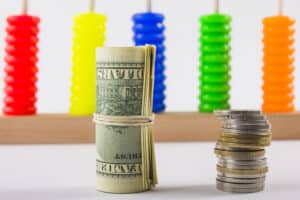Feel like saving money is impossible because your expenses or debt keep piling up?
I get it—I’ve been there.
But here’s a powerful truth I want to share with you: yes, it’s possible to build an emergency fund, even if your finances are tight.
You don’t need a lot of money or to “wait until there’s extra.”
You just need to take the first step—even if it’s small.
What Is an Emergency Fund and Why Do You Need One?
An emergency fund is money set aside exclusively for the unexpected.
It’s not for vacations or big purchases.
It’s your financial cushion for life’s surprises: illness, job loss, accidents, family emergencies, urgent repairs.
Many people confuse emergency savings with regular savings, but they’re different:
-
Savings are for specific goals: a trip, an investment, or a purchase.
-
Emergency funds are a safety net—you don’t touch it unless it’s absolutely necessary.
Having that backup brings peace of mind and freedom. Because when life gets hard—and it will—you won’t need to panic or go into debt.
How Much Do You Need?
3 Levels to Build Without Stress
Don’t get overwhelmed by big numbers.
Here’s a step-by-step path that lets you grow your fund calmly:
✅ Level 1: Basic Fund ($500)
Enough to cover small but urgent surprises like a doctor’s visit, a car repair, or a home fix.
This is the first step anyone can take.
✅ Level 2: One Month of Essential Expenses
Make a list of your bare-minimum monthly costs: rent, food, utilities, transportation.
That’s your next savings goal.
✅ Level 3: Ideal Fund (3 to 6 Months)
This level gives you real stability.
If you lose your income, this fund gives you breathing room while you recover.
It takes time—don’t rush it.
What If I Have Debt? How Can I Save?
The question everyone asks: Should I pay off my debt first or start saving?
My answer: Do both.
You don’t have to be debt-free to start protecting yourself.
Here are a few practical strategies:
🔸 Start with just 1%
If you earn $1,000/month, save $10.
The habit matters more than the amount.
🔸 Automate your savings
Use a separate account and schedule automatic transfers weekly or monthly.
🔸 Cut back without pain
Look at “leaky” expenses: unused subscriptions, impulse buys, eating out.
Redirect that money into your fund.
🔸 If your income is irregular…
Save a percentage of each payment, even if it’s small—like 5% of every job.
🔸 Use extra money wisely
Got a tax refund? Birthday cash? Allocate even 20% to your emergency fund.
Before You Invest… Protect Yourself First
Many people are eager to invest—but don’t have an emergency fund.
That’s like building a house with no foundation.
Financial stability starts with being ready for the unexpected.
A good rule of thumb:
If you couldn’t cover one month without income, you’re not ready to take financial risks.
Why Is It So Important to Start?
Because most crises don’t give you a warning.
And nothing is more expensive than facing an emergency without a plan.
An emergency fund doesn’t just give you money.
It gives you peace of mind, freedom, and the power to make better decisions.
Ready to Get Started?
Building an emergency fund is one of the most powerful acts of self-love and financial responsibility you can take.
Even if you can only save $5 a week right now, what matters most is that you start.



